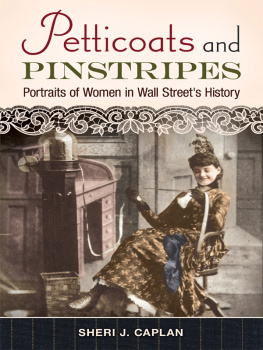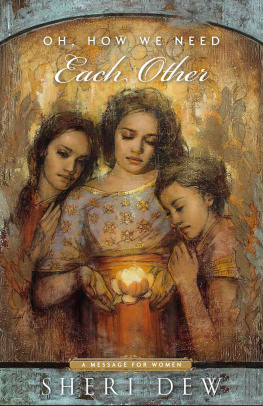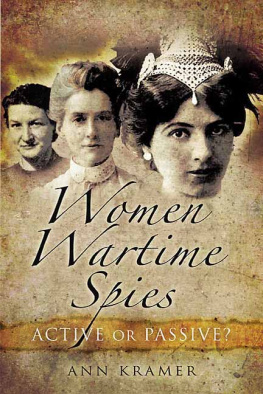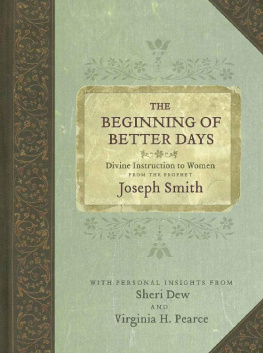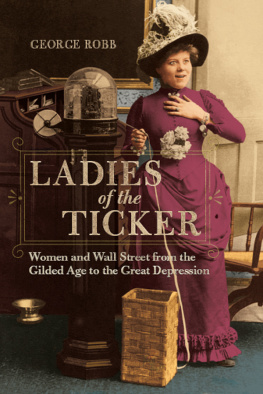
Petticoats and Pinstripes
Petticoats and Pinstripes
Portraits of Women in Wall Streets History
Sheri J. Caplan

AN IMPRINT OF ABC-CLIO, LLC
Santa Barbara, California Denver, Colorado Oxford, England
Copyright 2013 by Sheri J. Caplan
All rights reserved. No part of this publication may be reproduced, stored in a retrieval system, or transmitted, in any form or by any means, electronic, mechanical, photocopying, recording, or otherwise, except for the inclusion of brief quotations in a review, without prior permission in writing from the publisher.
Library of Congress Cataloging-in-Publication Data
Caplan, Sheri J.
Petticoats and pinstripes: portraits of women in Wall Streets history / Sheri J. Caplan.
pages cm.
Includes bibliographical references and index.
ISBN 978-1-4408-0265-2 (hbk. : alk. paper) ISBN 978-1-4408-0266-9 (ebook) 1. Women capitalists and financiersUnited StatesBiography. 2. Securities industryUnited StatesHistory. I. Title.
HG2463.A2C3697 2013
332.64'27309252dc23 2013000213
ISBN: 978-1-4408-0265-2
EISBN: 978-1-4408-0266-9
17 16 15 14 13 1 2 3 4 5
This book is also available on the World Wide Web as an eBook.
Visit www.abc-clio.com for details.
Praeger
An Imprint of ABC-CLIO, LLC
ABC-CLIO, LLC
130 Cremona Drive, P.O. Box 1911
Santa Barbara, California 93116-1911
This book is printed on acid-free paper 
Manufactured in the United States of America
In memory of my father, Harry B. Caplan, and grandmother, Lillian Kaliner;
in honor of my mother, Helen Kaliner Caplan;
and with love to Ken, Clarisa, and Samuel.
In a word, Wall Street is not the place for a lady to find fortune or character.
Henry Clews, Fifty Years in Wall Street
Contents
PART IV: Mavericks
Preface
More than six years ago, after reading several financial histories of the United States, I looked for information about the particular history of women on Wall Street. Although I found some books featuring contemporary women in finance, I was surprised not to find any text on the library shelves devoted to this subject, and only scant references to a few individuals in the general histories.
Could there really have been no female presence in this countrys financial history that has spanned more than two centuries? Doubtful, I thought. I contemplated undertaking this project then, but was overwhelmed by its seemingly daunting nature. When I returned to it several years later, I was surprised that the subject appeared to be still unexamined.
If there truly is no cure for curiosity, then I was ailing. I began to cautiously investigate the topic, still not knowing exactly the nature of my approach or whether, indeed, sufficient material existed to make it promising for a book project. Armed with a few names of individuals, I began to search for more, and for both greater detail and broader scope. Scouring newspaper articles from various different eras to glean data and to absorb the cultural milieu, I began to discover a wider breadth of female accomplishments in the financial realm. Little by little, I began to cobble together a rudimentary outline by which to frame my research. As I learned more about these women, both individually and collectively, I became more convinced that their place in history merited study and that their stories should be told.
Undoubtedly, my personal interest in the topic draws from my own professional experience. I had worked for several prominent investment banks on Wall Street, first in the late 1980s as a financial analyst and later during the 1990s as internal legal counsel. Even in this relatively small expanse of time, the attitudinal changes I observed toward women were remarkable.
During my first stint, a time when now defunct retailer Alcott & Andrews catered to upscale yuppie women by selling tailored suits inlaid with large shoulder pads and festooned with even larger bows, one could occasionally find female strippers visiting firm trading floors for employee birthday celebrations or stumble on workstations adorned with pornographic images. While human resource departments may have cried that these acts violated corporate codes of conduct, these rules seemed to largely go unenforced.
Upon my return nearly a decade later, I could see that the environment had shifted. While every firm fosters its own unique culture, the changed atmosphere owed more to evolving times than institutional idiosyncrasies. The prevalence of corporate clone couture for women had waned and more individualized styles of dress were now in vogue. More importantly, gone were the celebratory strip-o-grams and openly lewd behavior and language. But a general informal bias against providing an equal career platform for women persisted. Amid an exclusionary social undercurrent that fostered all-male golf outings, poker games, and drinking sessions, few women reached the highest professional ranks. Those that did faced issues of balancing work and family that their male peers often did not confront to such a degree in an industry in which it was not atypical to log many frequent flier miles or to move abroad at a firms behest. For those farther down the ladder, even scarcer options existed to address workplace flexibility.
Wall Street attracts ambitious individuals but can nevertheless wear out its suitors, both male and female, without remorse. The considerable stress and long hours make a combustible mix that readily chews up and spits out many talented individuals. At both its best and its worst, it is a dynamic place, one with few peers in terms of its power, energy, and hubris. Throughout its existence, colorful characters have made it their professional home. It is now time to tell the stories of some of these women and write them into this countrys financial history.
Acknowledgments
Over the course of this project, I have been fortunate to have had the support and assistance of various individuals and institutions. My editor, Michael Millman, believed in this project from the outset and I thank him for his confidence in me and his expertise. Credit is also due to Ethan P. Bullard, Curator at the Maggie L. Walker National Historic Site; Nancy Egloff, Historian, at the Jamestown-Yorktown Foundation; Kristin Aguilera, Deputy Director, and Alexis M. Sandler, General Counsel, of the Museum of American Finance; Janet Linde, Archivist at the New York Stock Exchange; and Sue Cartnick and the rest of the helpful staff of the Farmington, Connecticut Library.
I have been particularly privileged to have been in touch with all of the contemporary women profiled in this book. I thank Muriel Siebert, Elaine Garzarelli, Abby Joseph Cohen, and Amy Domini for sharing their thoughts and time with me, as well as their respective assistants and colleagues, Yesenia Berdugo, Elisa Korman, Leslie Shribman, and Colleen Berlo. Likewise, I thank Mark Montgomery and Peggy Walsh Cornog, children of Julia Montgomery Walsh, for their enthusiastic cooperation. Roberta Karmel, the first female SEC commissioner, was also very accommodating and I am only sorry that her full story could not be included here due to my decision to restrict the focus on present-day women to those whose careers primarily emanated from within the financial industry.
Family and friends have been most important in providing encouragement from the outset. In particular, both my grandmother and my mother served as inspirations and role models of strong women. They taught me not only the importance of financial literacy and autonomy, but that the greatest dividends are not the pecuniary kind but the sort that come from investing in family and community. My parents, sister, and in-laws have urged me on, and I regret that my father could not see this book published. To Ken, Clarisa, Samuel, Socrates, and Palma, my deepest gratitude for your patience and understanding while laundry has gone unfolded, board games unfinished, and walks cut short.
Next page
